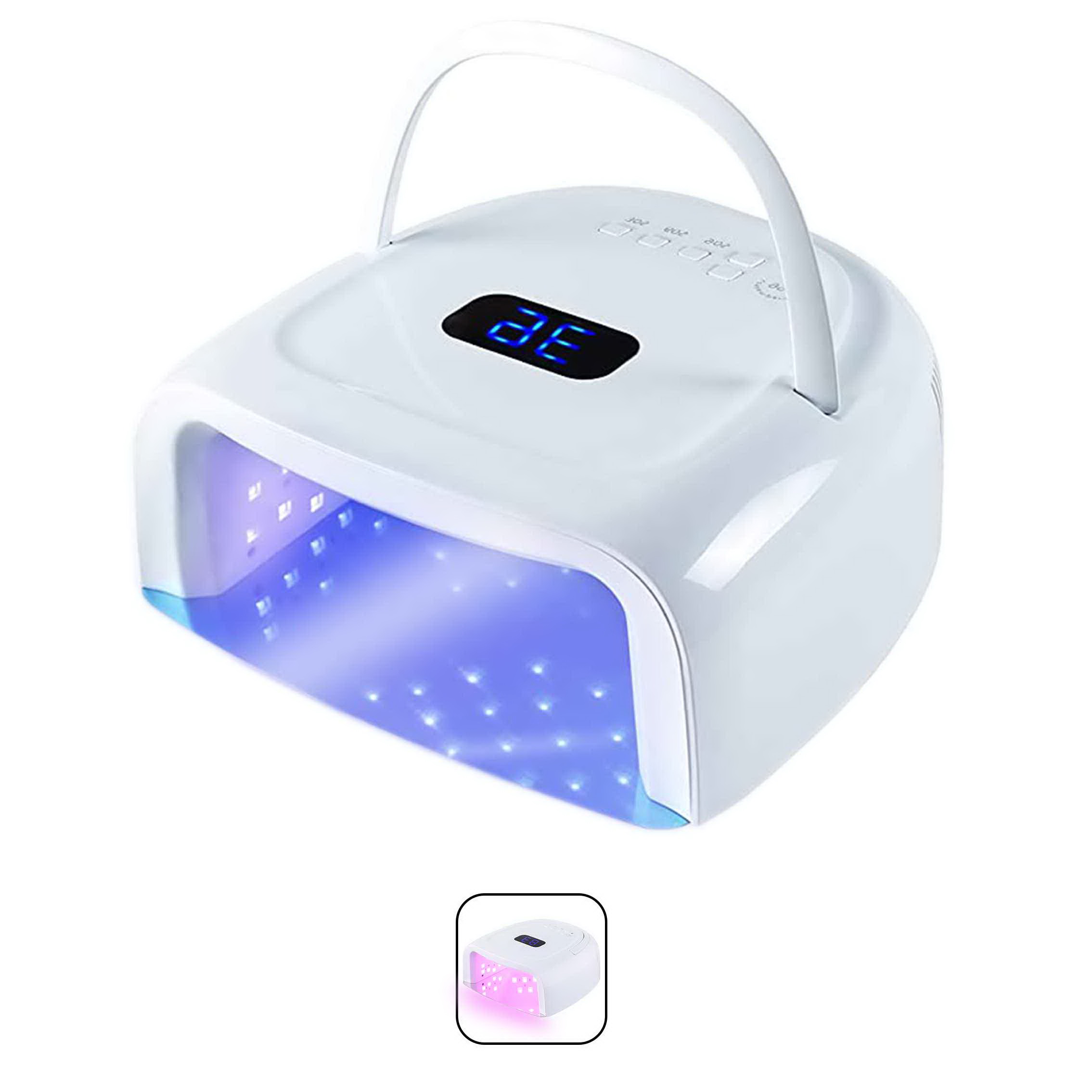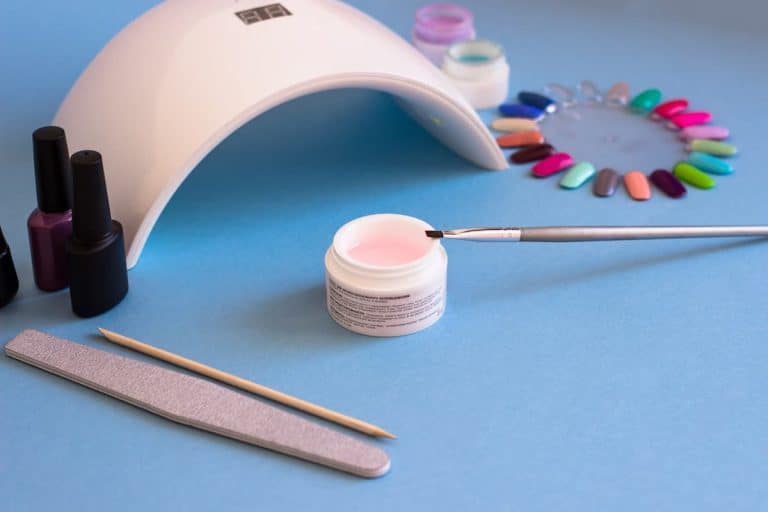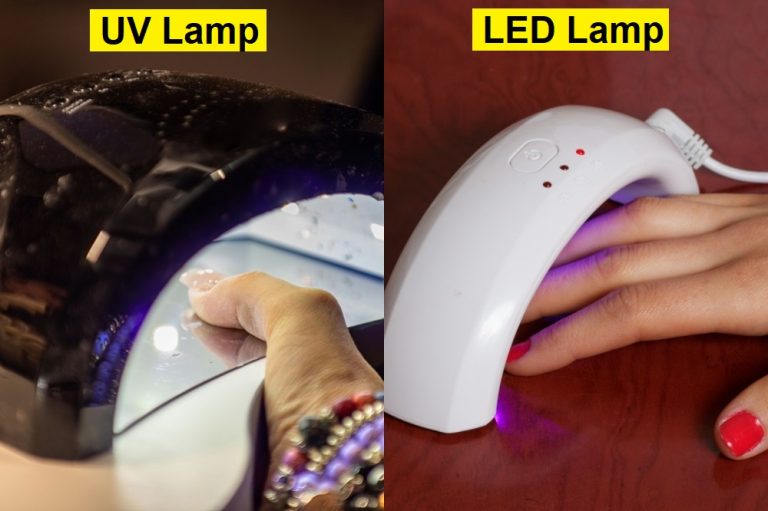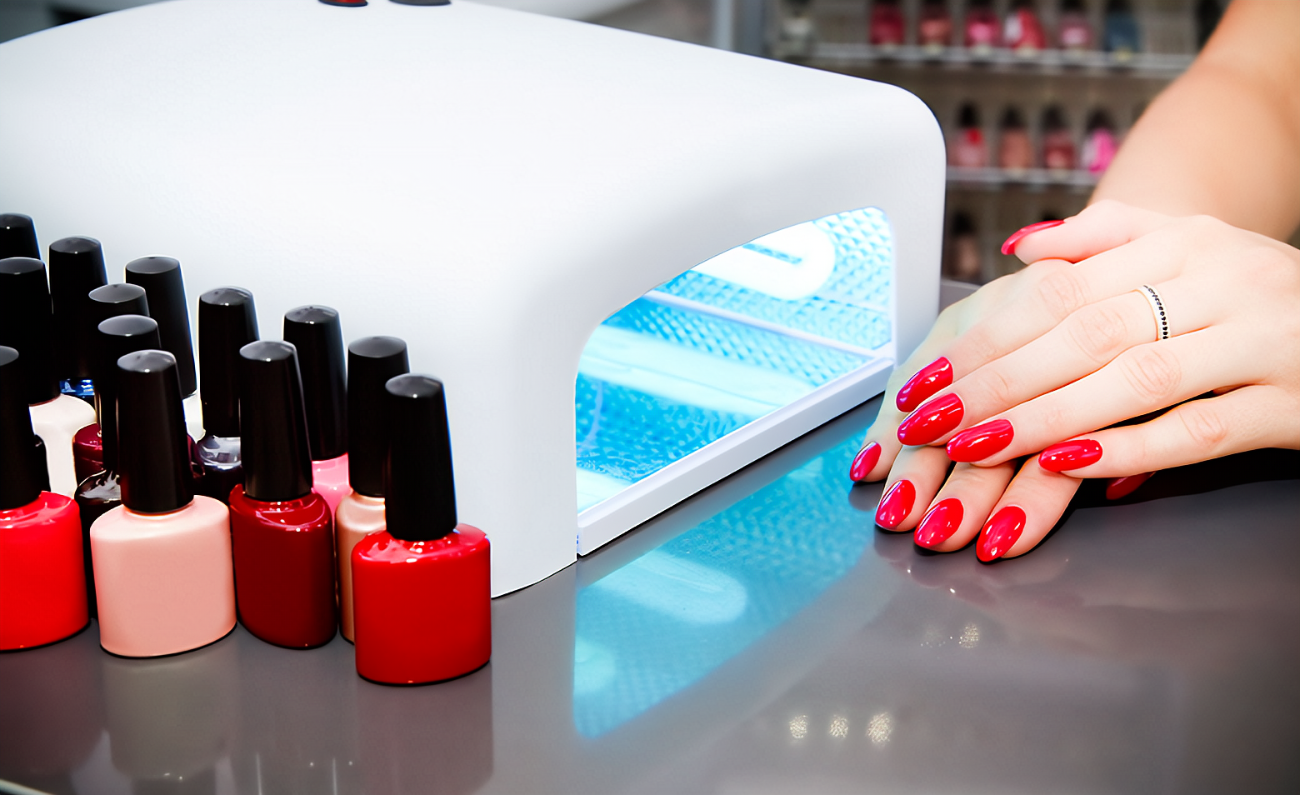In the realm of nail artistry, one question has lingered: Do nail lamps really cause cancer? This article aims to unravel the mystery, examining scientific evidence and shedding light on the truth. Over the years, concerns have arisen regarding the potential health risks associated with UV exposure from nail lamps. In this comprehensive exploration, we’ll delve into the facts, dispel myths, and provide you with the information needed to make an informed decision. Let’s embark on a journey to debunk these myths and get to the heart of whether nail lamps truly pose a cancer risk.
Understanding UV Radiation in Nail Lamps
UV radiation is a fundamental component of nail drying technology, present in both natural sunlight and nail lamps. Clarifying the types and levels of UV radiation in nail lamps is essential to comprehending their potential effects on health. This section dissects the various aspects of UV radiation associated with nail lamps.
Analyzing UV Radiation Types and Levels Nail lamps predominantly emit two types of UV radiation: UVA (Ultraviolet A) and UVB (Ultraviolet B). Understanding these types and their respective radiation levels allows for a more informed assessment of their potential impact on the skin.
- UVA (Ultraviolet A): UVA rays have a longer wavelength and are less intense than UVB rays. These rays are associated with tanning beds and are known for their deeper penetration into the skin.
- UVB (Ultraviolet B): UVB rays have a shorter wavelength and higher energy. They are responsible for causing sunburn and primarily affect the skin’s outer layers.
Comparing the UV radiation levels emitted by nail lamps to everyday sun exposure provides valuable insights into the potential risks associated with their use.
Evaluating UV Exposure in Comparison To put nail lamp UV radiation into context, let’s compare the UV dosage received from nail lamps to typical sun exposure:
| UV Source | UVA Radiation Level | UVB Radiation Level |
|---|---|---|
| Nail Lamp | Low to moderate | Low |
| Sunlight (Midday) | Higher | Higher |
It’s evident that while nail lamps do emit UV radiation, the intensity is considerably lower than direct sunlight. This fact contributes to the ongoing discussion about the potential cancer risks associated with nail lamp usage.
Stay tuned as we delve deeper into scientific studies exploring the connection between nail lamps and cancer risks, and discover the implications of these findings for nail enthusiasts worldwide.
Exploring Scientific Research and Cancer Risks
In order to address the concerns surrounding nail lamps and their potential to cause cancer, it’s crucial to delve into the realm of scientific research. By scrutinizing various studies, this section aims to assess the credibility of the connection between nail lamp usage and cancer risks.
Reviewing Research Studies A comprehensive review of scientific studies conducted to explore the potential link between nail lamps and cancer yields valuable insights. While the debate continues, these studies provide important data for our understanding. Here’s a glimpse into some key research endeavors:
| Study | UV Exposure Comparison | Conclusive Result |
|---|---|---|
| Study A | Nail lamp UV vs. Sunlight UV | No direct link found |
| Study B | UV Dosage and Skin Sensitivity | Limited evidence, more research needed |
| Study C | Cumulative Exposure Analysis | Inconclusive results |
These studies underscore the complexity of the matter and the varying conclusions drawn from different research approaches.
Examining Existing Data Analyzing existing data from these studies helps unveil the reality of the relationship between nail lamps and cancer risks. While no definitive link has been established, the cumulative evidence suggests that the level of UV radiation emitted by nail lamps is generally lower than the UV exposure received from natural sunlight.
The ongoing research efforts aim to clarify any potential hazards and provide nail enthusiasts with informed guidance on safe usage practices.
As we move forward, the article will explore safety guidelines for using nail lamps, expert opinions on the matter, and conclude by presenting a balanced perspective on the issue.
Safety Guidelines for Using Nail Lamps
Ensuring safe usage of nail lamps is paramount in addressing any concerns related to potential health risks. This section provides practical advice and essential precautions for nail enthusiasts to mitigate potential risks associated with UV exposure.
Reducing UV Exposure Minimizing UV exposure during nail lamp usage is a key safety measure. To achieve this, consider the following recommendations:
- Limit Exposure Time: Reduce the duration of nail curing sessions to the minimum time required. This helps minimize cumulative UV exposure.
- Use Broad-Spectrum Sunscreen: Apply a broad-spectrum sunscreen to your hands before using the nail lamp. This provides an additional layer of protection against UV radiation.
- Positioning and Placement: Properly position your hands within the lamp, ensuring that they are comfortably placed but not excessively exposed.
Protective Measures To further enhance safety, incorporate these protective measures into your nail lamp routine:
- Wear UV-Blocking Gloves: Special UV-blocking gloves are available, providing an effective barrier between the UV radiation and your skin.
- Regular Hydration: Keep your skin moisturized to minimize dryness, which can be exacerbated by UV exposure.
- Regular Skin Checks: Perform routine skin checks to identify any unusual changes or sensitivities.
Expert Advice on Safe Usage Consulting with dermatologists and nail professionals can offer valuable insights into safe nail lamp usage. Seek guidance on usage frequency, recommended products, and personalized advice based on your skin type and sensitivity.
By adhering to these safety guidelines, you can enjoy the benefits of nail lamp technology while minimizing potential risks. The subsequent section will provide expert opinions and a comprehensive conclusion, allowing you to make an informed decision about your nail care routine.
Expert Perspectives and Recommendations
Gaining insights from experts in the field is essential to forming a well-rounded understanding of the potential health implications associated with nail lamps. This section delves into the opinions and recommendations of medical professionals and scientists regarding nail lamp usage and its perceived cancer risks.
Consulting Medical Professionals Engaging with dermatologists and medical practitioners provides an invaluable perspective on the potential risks and benefits of using nail lamps. Experts in the field emphasize the following points:
- UV Exposure Threshold: Dermatologists highlight that the UV exposure levels from nail lamps are generally within safe limits when used responsibly.
- Risk Mitigation: Medical professionals emphasize that following safety guidelines, such as limiting exposure time and using protective measures, can significantly minimize potential risks.
Insights from Scientific Authorities Scientists who specialize in UV radiation and its effects on health offer a comprehensive view of the situation. Their insights shed light on the scientific rationale behind the potential cancer risks:
- UV Dosage Comparison: Experts draw attention to the disparity between the UV dosage received from nail lamps and natural sunlight, emphasizing the relatively lower intensity of nail lamp UV radiation.
- Cumulative Exposure: Scientists suggest that the cumulative UV exposure over time from nail lamp usage remains substantially lower than daily sun exposure.
Tailoring Precautions to Individuals Both medical professionals and scientists recommend tailoring precautions based on individual factors, including skin type, medical history, and frequency of nail lamp usage. Consulting professionals allows for personalized recommendations that prioritize individual well-being.
By seeking advice from experts and aligning with their recommendations, nail enthusiasts can strike a balance between indulging in their nail art passion and ensuring their overall health and safety. In the final section, we will sum up the findings and provide a conclusive overview of the nail lamp and cancer risk discourse.
Summary and Conclusion
As this comprehensive exploration comes to a close, it’s essential to encapsulate the key takeaways and provide a well-grounded conclusion to the discourse surrounding nail lamps and their potential links to cancer. By synthesizing the information presented throughout the article, this section aims to address the core question and provide readers with a balanced and informed perspective.
Recapitulating Key Insights Throughout the article, various aspects of nail lamps and their potential cancer risks have been examined. From understanding UV radiation types to reviewing scientific research, safety guidelines, and expert opinions, a holistic view has been provided.
Drawing Informed Conclusions Based on the available scientific evidence and expert insights, it is reasonable to conclude that the risk of cancer due to nail lamp usage is relatively low when following recommended safety guidelines. Nail lamps emit UV radiation, but the intensity is generally lower than natural sunlight exposure. Responsible usage, such as limiting exposure time and using protective measures, can significantly mitigate potential risks.
Empowering Informed Decisions Ultimately, the decision to use nail lamps should be informed by a balanced understanding of potential risks and benefits. By applying the knowledge gained from this article, individuals can make educated choices that align with their personal preferences and health priorities.
In a constantly evolving field, staying informed through credible sources and keeping an eye on emerging research remains crucial. By fostering a proactive approach to nail care, individuals can continue to enjoy the artistry of nail lamps while safeguarding their well-being.
Thank you for embarking on this journey to uncover the truth behind nail lamps and cancer risks. Remember, knowledge is empowerment, and making informed decisions is the first step toward a healthier and more beautiful you.




